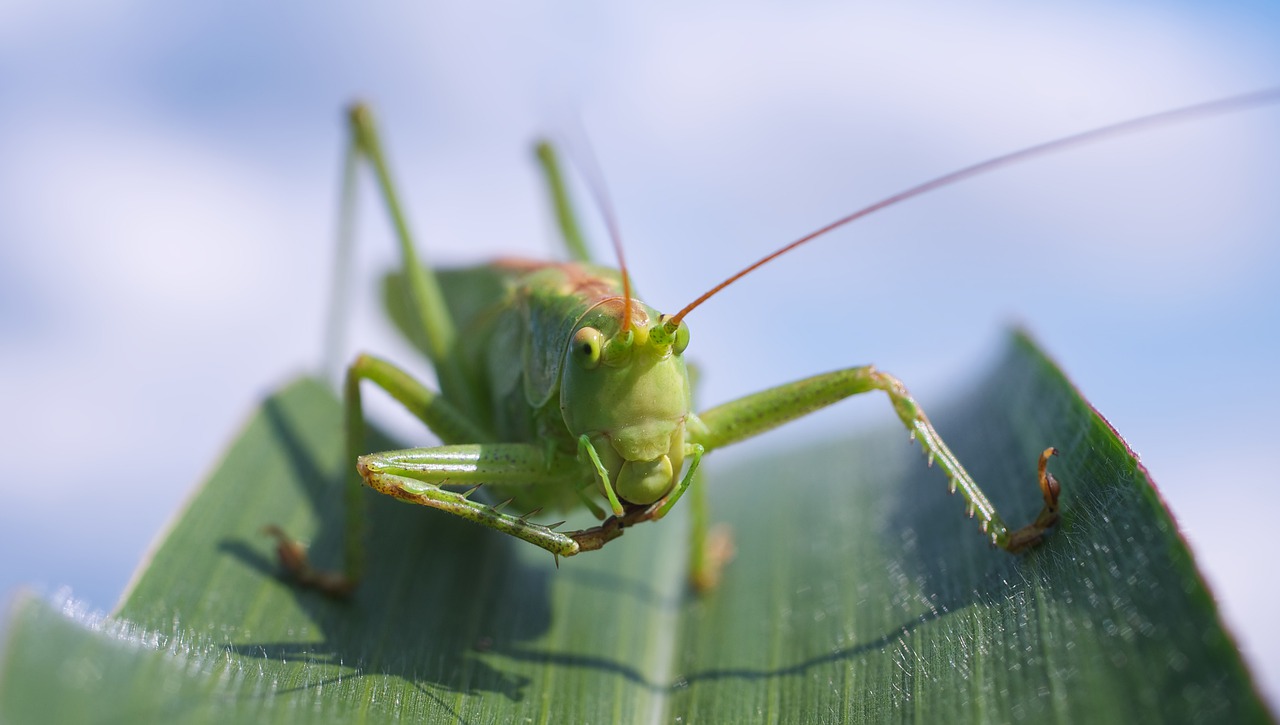
Vocabulary:
I will read the words, meanings, and sample sentences. Then, repeat after me.
- cricket /KRIK-it/
- edible /ED-uh-buhl/
- nutritional /noo-TRISH-uhn-nl/
- sustainability /suh-stey-nuh-BIL-i-tee/
- scarcity /SKAIR-si-tee/
[noun] – a brown or black insect that makes short, loud noises by rubbing its wings together
The only sound was a cricket chirping.
[adjective] – suitable or safe for eating
It was the only edible thing in the pantry.
[adjective] – relating to nutrition
Fiber has no calories or nutritional value.
[noun] – the quality of causing little or no damage to the environment and therefore able to continue for a long time
The company is committed to environmental sustainability.
[noun] – a situation in which something is not easy to find or get
There is a scarcity of skilled workers in the company.
Article reading:
Please read the whole article. Then, I will check your pronunciation and intonation.
Although eating crickets and grasshoppers may seem disgusting to most people in Europe and the US, it is a common snack in some regions of Asia and Africa. They are not only nutrient-dense but also less harmful to the environment.
Grasshoppers are a healthy, high-protein snack. According to Leonard Alfonce, an entomology researcher at the Sokoine University of Tanzania, they play a significant role in enhancing nutrition, food security, and employment in East Africa. Leonard Alfonce thinks insects should be raised as a year-round sustainable food source. “The edible grasshoppers are highly valued and their trade is a source of income in Uganda,” Alfonce says. “Optimising mass rearing protocols for edible grasshoppers would ensure their year-round supply to enhance nutrition, food security, and livelihoods in East Africa.” The long-horned grasshoppers, known as Nsenene in Uganda, have a nutritional content of 34–45% protein, 54–54% fat, and 4–6% fiber. In general, insects are rich in vitamins and amino acids. Then there are the advantages of sustainability. Insect farming has a significantly lower carbon footprint than traditional farming because it uses a lot less water, energy, and land. Mealworms and crickets could replace half of the meat consumed worldwide, cutting farmland use by a third and freeing up 1,680 million hectares.
As per Bill Broadbent, the president of Entosense, a US company on a mission to make edible insects part of Americans’ daily diet, insects might not completely replace meat, but they do represent a significant alternative protein source in a world likely to struggle with food scarcity over the coming years as the global population continues to grow.
Grasshoppers are a healthy, high-protein snack. According to Leonard Alfonce, an entomology researcher at the Sokoine University of Tanzania, they play a significant role in enhancing nutrition, food security, and employment in East Africa. Leonard Alfonce thinks insects should be raised as a year-round sustainable food source. “The edible grasshoppers are highly valued and their trade is a source of income in Uganda,” Alfonce says. “Optimising mass rearing protocols for edible grasshoppers would ensure their year-round supply to enhance nutrition, food security, and livelihoods in East Africa.” The long-horned grasshoppers, known as Nsenene in Uganda, have a nutritional content of 34–45% protein, 54–54% fat, and 4–6% fiber. In general, insects are rich in vitamins and amino acids. Then there are the advantages of sustainability. Insect farming has a significantly lower carbon footprint than traditional farming because it uses a lot less water, energy, and land. Mealworms and crickets could replace half of the meat consumed worldwide, cutting farmland use by a third and freeing up 1,680 million hectares.
As per Bill Broadbent, the president of Entosense, a US company on a mission to make edible insects part of Americans’ daily diet, insects might not completely replace meat, but they do represent a significant alternative protein source in a world likely to struggle with food scarcity over the coming years as the global population continues to grow.
Discussion Questions:
I will read each question. Then, please answer them.
- Have you tried eating exotic foods? If so, how was your experience? If not, would you like to try it? Why or why not?
- Could you replace beef with any kind of food?
- If you were to choose one kind of food that could replace beef, what would it be? Why?
- Do you support grasshoppers as an alternative to beef?
- What foods do you think are sustainable? Could you tell me about them?
Summarization
Please summarize the whole article using your own words and expressions. You will have one minute to prepare before you answer.
Describe:
Please explain the definition of each word listed below based on your understanding. You can provide example sentences if needed.
- snack
- region
- harmful
- role
- population